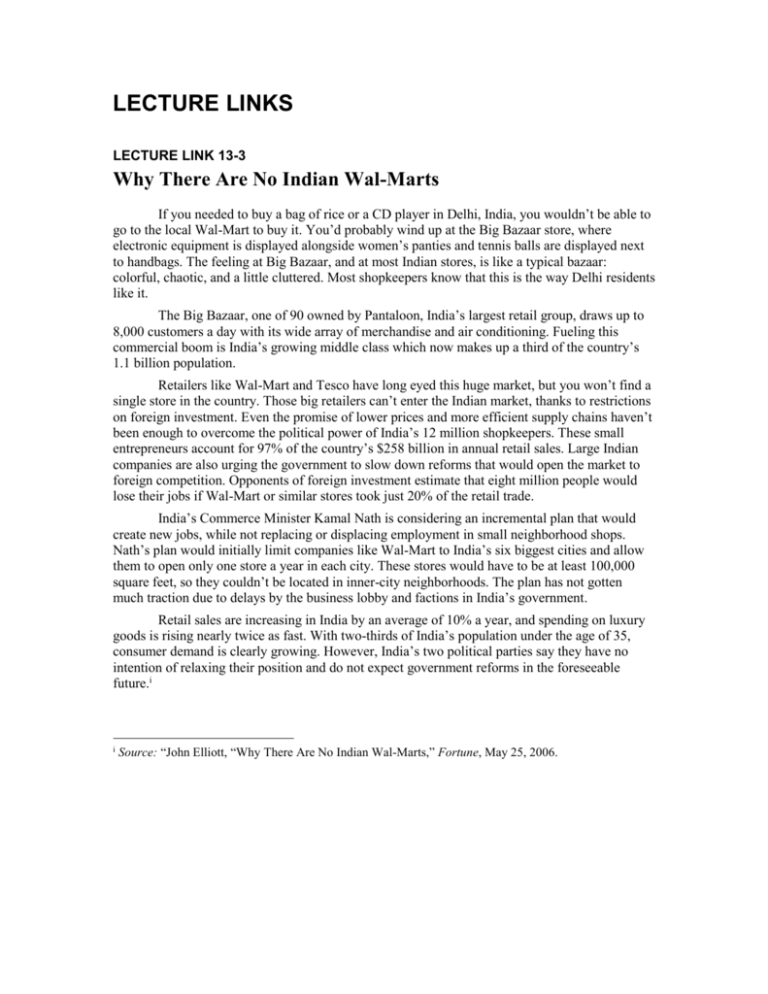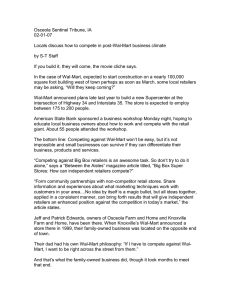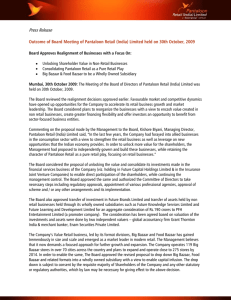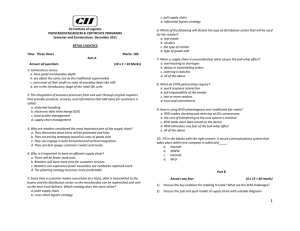LECTURE LINKS
advertisement

LECTURE LINKS LECTURE LINK 13-3 Why There Are No Indian Wal-Marts If you needed to buy a bag of rice or a CD player in Delhi, India, you wouldn’t be able to go to the local Wal-Mart to buy it. You’d probably wind up at the Big Bazaar store, where electronic equipment is displayed alongside women’s panties and tennis balls are displayed next to handbags. The feeling at Big Bazaar, and at most Indian stores, is like a typical bazaar: colorful, chaotic, and a little cluttered. Most shopkeepers know that this is the way Delhi residents like it. The Big Bazaar, one of 90 owned by Pantaloon, India’s largest retail group, draws up to 8,000 customers a day with its wide array of merchandise and air conditioning. Fueling this commercial boom is India’s growing middle class which now makes up a third of the country’s 1.1 billion population. Retailers like Wal-Mart and Tesco have long eyed this huge market, but you won’t find a single store in the country. Those big retailers can’t enter the Indian market, thanks to restrictions on foreign investment. Even the promise of lower prices and more efficient supply chains haven’t been enough to overcome the political power of India’s 12 million shopkeepers. These small entrepreneurs account for 97% of the country’s $258 billion in annual retail sales. Large Indian companies are also urging the government to slow down reforms that would open the market to foreign competition. Opponents of foreign investment estimate that eight million people would lose their jobs if Wal-Mart or similar stores took just 20% of the retail trade. India’s Commerce Minister Kamal Nath is considering an incremental plan that would create new jobs, while not replacing or displacing employment in small neighborhood shops. Nath’s plan would initially limit companies like Wal-Mart to India’s six biggest cities and allow them to open only one store a year in each city. These stores would have to be at least 100,000 square feet, so they couldn’t be located in inner-city neighborhoods. The plan has not gotten much traction due to delays by the business lobby and factions in India’s government. Retail sales are increasing in India by an average of 10% a year, and spending on luxury goods is rising nearly twice as fast. With two-thirds of India’s population under the age of 35, consumer demand is clearly growing. However, India’s two political parties say they have no intention of relaxing their position and do not expect government reforms in the foreseeable future.i i Source: “John Elliott, “Why There Are No Indian Wal-Marts,” Fortune, May 25, 2006.











